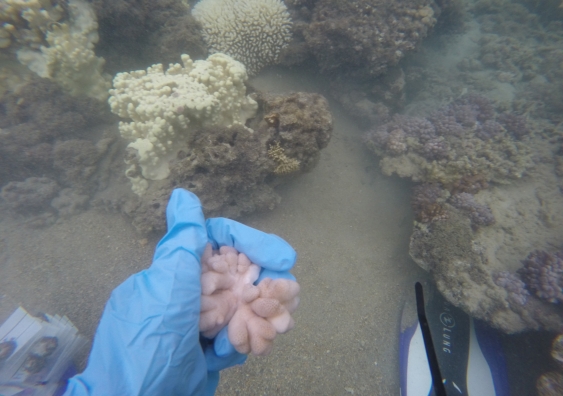Soft corals more resilient than reef-building corals during a marine heatwave
Might soft corals withstand marine heatwaves better than their reef-building cousins?
Might soft corals withstand marine heatwaves better than their reef-building cousins?

Soft corals, the penned, fanned and tentacled corals, of Lord Howe Island appear more resilient to coral bleaching than their hard coral cousins, a team of marine biologists led by UNSW Science finds.
Hard, reef-building corals appear to be less resilient to coral bleaching than soft corals according to a survey at the world’s southern-most coral reef, around Lord Howe Island, during, immediately after, and then seven months after a marine heatwave in 2019.
“Overall, soft corals at Lord Howe Island did better than hard corals during the bleaching event,” says Rosemary (Rosie) Steinberg, PhD student and lead author of the paper published in Frontiers in Physiology. “This suggests that if Lord Howe Island continues to bleach, the species of soft corals that did well might become more prevalent on these reefs in comparison to their hard cousins.”
This in turn, says Ms Steinberg, “allows us to plan for the benefits and challenges that a soft-coral dominated reef might pose”.
“Soft corals are different to hard corals – the ones we usually see in photos of reefs – because the vast majority of them don’t make a solid skeleton underneath their tissue. They are usually flexible, while hard corals are usually rigid and immovable.
“The fact that some species not only survived bleaching but didn’t have any physical response to marine heatwaves is excellent news. It lets us know that while we may lose some species to future bleaching, there is a chance that the reef can recover, although with a different coral community.”
The resistant species were “very common soft corals [meaning they] can hopefully maintain important reef habitat and function while more sensitive species recover,” according to Ms Steinberg.
While, overall, soft corals survived better than hard corals, some species still showed signs of bleaching.
“Each species of soft coral had a different response,” says Ms Steinberg. “One bleached, one seemed to do better than normal, and one didn’t have any response to the increased heat.”

“Some colonies of the bleached species, Cladiella sp., didn’t just bleach, but peeled off the reef during the heatwave. As far as I can tell, this is a world-first observation in the literature.” Photo: Rosie Steinberg/UNSW Science
Coral bleaching involves the expelling of symbionts, the microscopic organisms that inhabit the coral's cells to impart colour and energy to the creature. In this survey, the researchers found one species, Xenia sp., responded to the heatwave by acquiring more (not less, which is typical for coral bleaching) of these symbionts, theoretically able to generate more, not less, energy.
“This really surprised me,” says Ms Steinberg, “Xenia is a very charismatic and beautiful species, and I’m not entirely sure what happened. Perhaps it was a unique stress response, or perhaps they thrive during heatwaves – or, at least, warmer water than the cooler Lord Howe Island temperatures.”
The variable response of soft and hard coral species to marine heatwaves emphasises the importance of species-specific protection of reefs.
“Knowing which groups and species of corals are likely to survive in our warming world is critical to conserving corals reefs. This information can let us predict what future reefs will look like, what species of fish and invertebrates they will support, and what services they will be able to provide to the communities that rely on them.
“For example, many communities, including those of Lord Howe Island and the northern coasts of Australia, rely on the rocky reef structure to break waves and protect shorelines. Most studies of coral bleaching focus on hard corals, and for one very obvious reason – hard corals actually build the rock structure of the reef. Without them, the reef starts to fall apart.
“Since we are finding that soft corals may survive better in our warming world in eastern Australia, we really need to understand what role soft corals play in keeping this hard reef structure together.”
Next, the team is delving deeper into understanding how soft corals, their symbiotic algae, and their bacterial communities dealt with the marine heatwaves.
“We are examining which species of algae and bacteria survived the heatwaves, which were expelled from corals, and which came in to fill the empty spaces. This can help us understand if there are any interventions, like adding more heat-resistant symbionts to reefs, that might help corals at Lord Howe Island survive and recover from future marine heatwaves.”